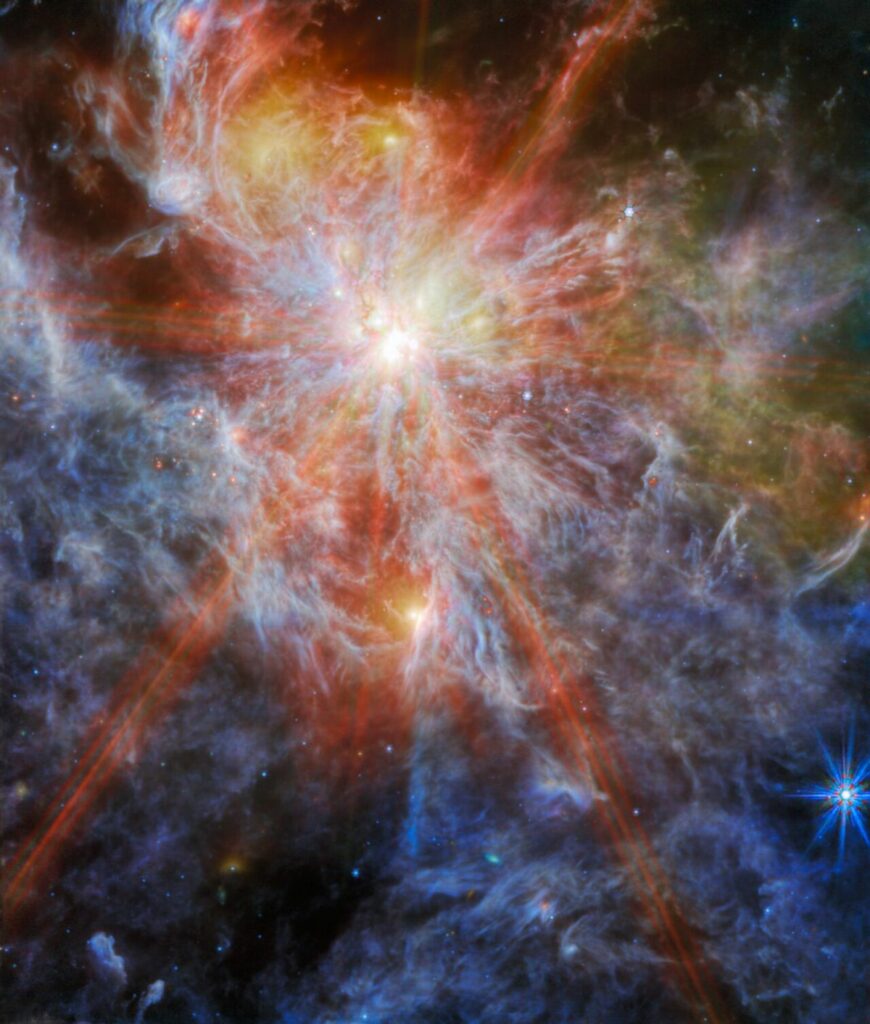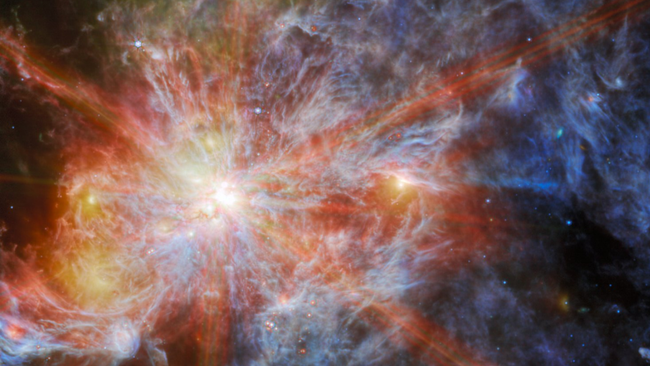Stunning James Webb Space Telescope Image Captures Radiant Glow of Nearby Stellar Nursery
The starburst complex in the Large Magellanic Cloud was captured by the potent space telescope.
A breathtaking new image captured by the James Webb Space Telescope (JWST) showcases a sprawling star factory situated in a neighboring galaxy, displaying vibrant hues and remarkable intricacy.
The image, featuring shades of orange, yellow, and blue, reveals the interstellar atomic hydrogen within the expansive nebula N79, which spans an impressive 1,630 light-years. N79 is nestled within the Large Magellanic Cloud, a satellite galaxy of our very own Milky Way. This particular region is actively engaged in the formation of stars and has remained largely unexplored by astronomers until now.
N79 is often regarded as a younger counterpart to another recent target of the JWST within the Large Magellanic Cloud, namely the Tarantula Nebula. The Tarantula Nebula, also known as 30 Doradus, is located approximately 161,000 light-years away from Earth. Despite their similarities, scientists have determined that N79 has been generating stars at twice the rate of the Tarantula Nebula over the past 500,000 years.
By studying regions of intense star formation like N79 using the JWST, scientists gain valuable insights into the composition of gas and dust clouds that give birth to stars in the early universe. This allows them to better understand the conditions during the peak of star formation in the distant past.
Seeing star formation more clearly with the JWST
The recently captured image by JWST focuses on three massive clusters of cold atomic gas known as molecular clouds, specifically N79 South or S1. One of the most remarkable features of this image is the presence of a “starburst” pattern surrounding the luminous core of N79. This pattern is a result of diffraction spikes caused by the 18 segments of JWST’s primary mirror as they gather light. These mirror segments are arranged in a hexagonal configuration resembling a honeycomb, resulting in six primary diffraction spikes.
These diffraction spikes occur when JWST observes exceptionally bright and compact objects that emit light from a concentrated location. However, when the telescope examines galaxies, even those that may appear minuscule, the light originates from more dispersed and widespread sources, leading to the absence of a diffraction pattern.

The new N79 image was captured by JWST using its Mid-InfraRed Instrument (MIRI). Dense clouds of dust readily absorb visible light, but long-wave infrared light can pass through more easily. Therefore, MIRI’s infrared view enables astronomers to delve deep into this star-forming region.
Consequently, JWST is capable of observing young stellar bodies that are still enclosed in their natal gas and dust cocoon. These “protostars” have not yet accumulated enough material from their envelope to reach the mass required for hydrogen to helium fusion in their cores, which is the defining process of a star.
In the JWST N97 image, an infant star that has recently initiated this process can be identified as the brightest point amidst billowing orange clouds of gas and dust. The observations of N79 by JWST are part of the telescope’s mission, which involves examining the evolution of disks and envelopes of material surrounding stars at various stages of their development.
It is anticipated that JWST, as part of this mission, will provide astronomers with their initial glimpse of planet-forming disks resembling the sun’s surrounding young stars. This will offer insights into how our solar system formed approximately 4.6 billion years ago.
This article is republished from SpaceCom under a Creative Commons license. Read the original article.
Do not forget to share your opinion with us to provide you with the best posts !




0 Comments